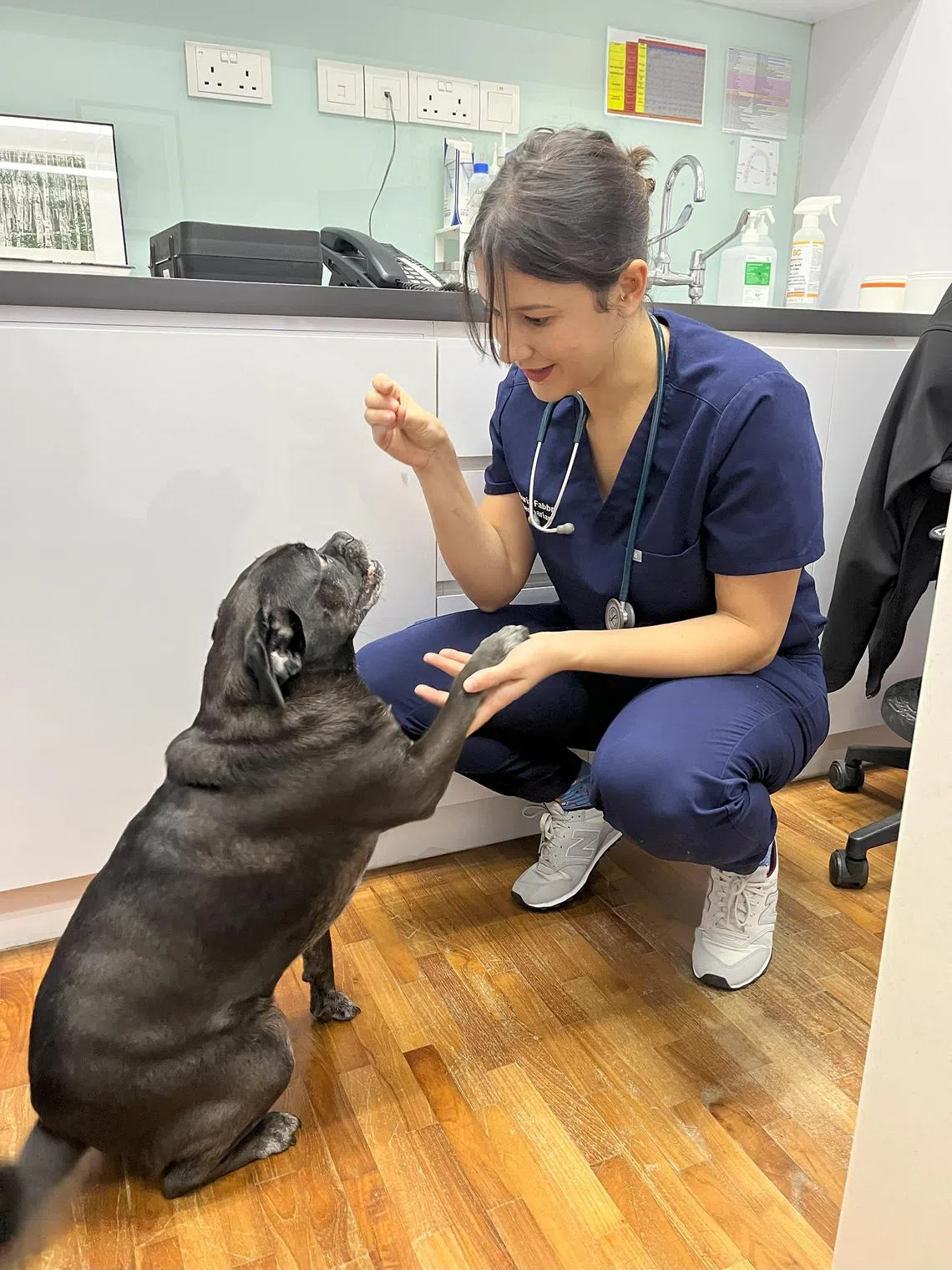Vet Talk: Can antibiotic-resistant bacteria be shared between pets and their owners?
Sign up now: Get ST's newsletters delivered to your inbox

Emerging research shows that humans and their pets who live together often develop similar microbiomes – distinct from animals living outside the household.
PHOTO: PIXABAY
Suria Fabbri
Follow topic:
SINGAPORE – Is your pet suffering from repeated ear infections? In veterinary clinics, skin and ear issues make up a large proportion of weekly consultations.
Behind what appears to be a simple recurring infection lies a much deeper concern, one that has drawn the attention of public health officials
In September 2024, the United Nations General Assembly held its second High-Level Meeting on Antimicrobial Resistance (AMR), reaffirming its political commitment to tackle this growing crisis. According to the World Health Organisation, there are nearly five million annual deaths associated with resistant infections.
AMR occurs when microbes such as bacteria, fungi and viruses evolve to resist medications designed to eliminate them. It can occur in both humans and animals.
Over the years, the inappropriate use of antimicrobials such as antibiotics has resulted in the emergence of resistant strains, and what once took decades to evolve, can now happen in just a few years.
Every antibiotic in use today faces some degree of resistance. The result is a high-stakes race between bacterial evolution and the development of new antibiotics.
Emerging research shows that humans and their pets who live together often develop similar microbiomes – distinct from animals living outside the household.
This raises an uncomfortable but important question: Can antibiotic-resistant bacteria be shared between pets and their owners?
In homes where people and pets live in close contact, misuse of antibiotics, whether in pets or people, can raise the risk of resistant bacteria spreading within the household. As with many health threats, prevention is key.
Here are four practical steps pet owners should consider to minimise the risk of AMR at home.
1. Source puppies and kittens from approved sources, including registered breeders
Backyard-bred puppies and kittens often suffer from many issues, such as congenital defects, inbreeding and weakened immune systems.
These early-life disadvantages increase their risk of infection, making them more likely to receive antibiotics and then become resistant to them.
Avoid sourcing pets through unauthorised channels on social media platforms and informal online listings, as breeder standards and animal health histories are often unverified.
2. Heed your vet’s advice on culture and sensitivity (C&S) testing for recurring infections
If your pet suffers from repeated ear, skin or urinary tract infections, and symptoms return after antibiotics, do not take chances.
Ask your vet if C&S testing is appropriate. This useful diagnostic tool identifies the type of bacteria and determines which antibiotics are most effective against it.
Without it, repeated courses of the wrong antibiotic will be ineffective against the infection. The wrong prescription will also contribute to resistance, prolong your pet’s discomfort and, ultimately, drive up treatment costs.

Dr Suria Fabbri is a veterinarian with a focus on antimicrobial resistance.
PHOTO: COURTESY OF SURIA FABBRI
3. Never give leftover antibiotics without veterinary guidance
While it might seem convenient in the short term, using leftover medications without a proper diagnosis can do more harm than good.
To the naked eye, your pet’s symptoms may appear familiar, but on a microscopic level, the underlying cause could be different.
Using the wrong antibiotic not only risks ineffective treatment, but also contributes to the development of resistance, as the bacteria are exposed to a drug that may not fully eliminate them.
Pet owners should complete the full course of any prescribed oral antibiotics, even if their pet appears to have recovered early.
Ear drops, eye drops and topical creams that have been opened should be discarded after four weeks, as they may no longer be effective or sterile.
4. Avoid feeding raw diets to your pets
Raw meat can carry strains of antibiotic-resistant bacteria.
A common misconception about raw feeding is that freezing will make it safe for consumption. In reality, it may reduce the number of less hardy bacteria, but it does not eliminate bacteria entirely, nor does it remove their potential to contribute to antimicrobial resistance.
Pets fed on raw diets may not appear unwell, but can still shed resistant bacteria through their saliva or faeces, posing a risk to other household members, particularly young children, the elderly or immunocompromised.
Cooking pet food remains the most reliable method to reduce the risk of AMR transmission in your home.
The rise of AMR demands a consistent and united response across both human and animal health. The message remains the same: responsible use of antimicrobials matters.
AMR is not confined to hospitals. It is in your home, your pets and your shared environments. Recognising the warning signs and acting early can protect you and your pet.
Dr Suria Fabbri, honorary editor at the Singapore Veterinary Association, is a veterinarian with a focus on antimicrobial resistance and the One Health framework, which considers the links among human, animal and environmental health. She combines clinical experience with public outreach, regularly speaking on One Health awareness and advocating for responsible antimicrobial use across sectors.
Vet Talk is a fortnightly column where veterinarians offer advice on pet issues.

